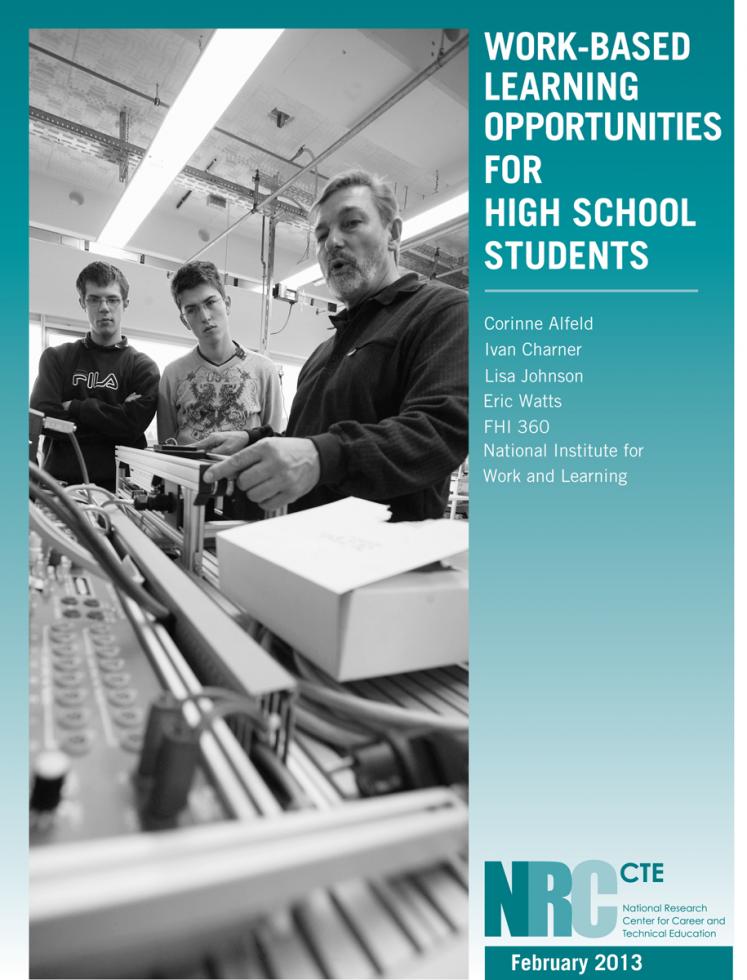Work-Based Learning Opportunities for High School Students
 This report prepared by FHI 360
provides a conceptual base for work-based learning (WBL), a
strategy that helps students apply academic and technical skills
and develop employability skills. WBL has been identified as an
important issue for state and local program reform and
implementation, but there is a need to better understand WBL as
part of secondary CTE programs.
This report prepared by FHI 360
provides a conceptual base for work-based learning (WBL), a
strategy that helps students apply academic and technical skills
and develop employability skills. WBL has been identified as an
important issue for state and local program reform and
implementation, but there is a need to better understand WBL as
part of secondary CTE programs.
Various attempts have been made in the last several decades to bring WBL into mainstream U.S. education reform, but two recently published reports – Pathways to Prosperity (Symonds, Schwartz, & Ferguson, 2011) and Learning for Jobs (OECD, 2010) – have once again brought to the forefront issues related to the value of WBL as an instructional strategy to better prepare students for college and the workforce.
Staff at FHI 360 scanned financial literature, visited high schools, and produced detailed descriptions of current WBL practices that may help educators and policymakers understand how WBL operates in the United States. This report describes similarities and differences, as well as strengths and limitations, across three major WBL categories – internships/ co-operative education (co-op), youth apprenticeships, and school-based enterprises (SBE) – supplemented by vignettes, case studies, and descriptions of selected WBL sites.
Assuming that federal policy will support states in improving WBL programs, recommendations based on the findings generated by this project are for state leaders to:
- Provide a clear, substantive purpose for and stated value of WBL, emphasizing the learning component in the work experience.
- Offer resources and information about components of high-quality WBL programs.
- Provide professional development for teachers and WBL coordinators to develop instructional strategies, including for cognitive transfer of problem-solving skills.
- Convene meetings with employer associations and labor unions to achieve buy-in for the creation of more meaningful WBL programs connected to school curriculum.
- Provide resources and guidelines for employer mentor selection, training, and continued engagement.
- Support teachers (with release time and professional development) to work closely with WBL coordinators and employer mentors to construct detailed student training plans (into which students can have input).
- Require the broadening of selection criteria and provisions for access so more students can participate in WBL.
- Demonstrate strategies for involving academic and CTE teachers in the WBL process so that WBL is connected to classroom learning.
- Provide better guidelines for accountability for student learning in WBL programs
- Fund WBL coordinators for each project with adequate support and resources.
Alfeld, C., Charner, I., Johnson, L., & Watts, E. (2013, February). Work-based learning opportunities for high school students. Louisville, KY: National Research Center for Career and Technical Education, University of Louisville.

